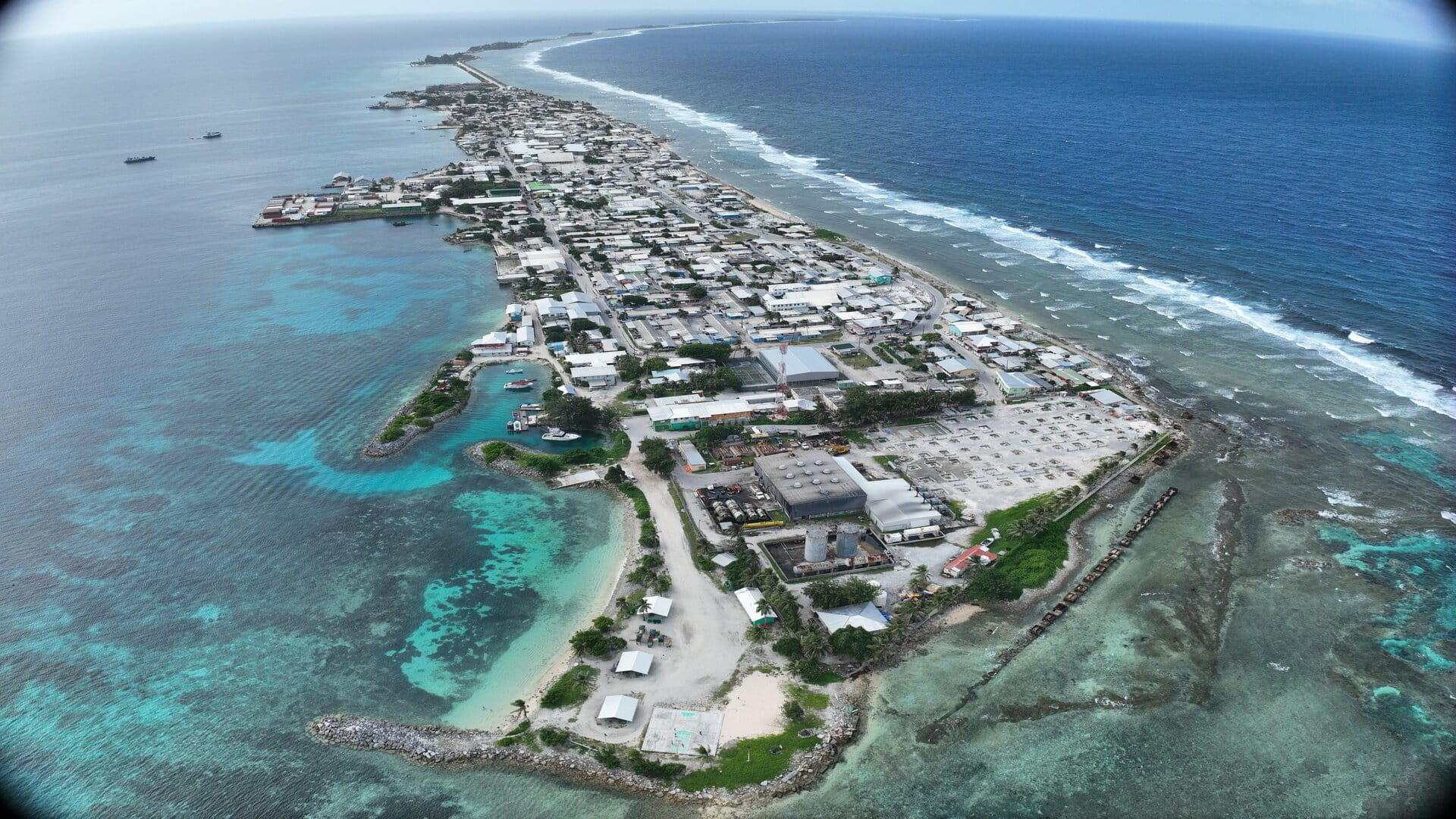Protecting Ebeye from storm erosion and wave overtopping

Project facts
- ClientRMI Ministry of Works
- LocationThe Marshall Islands
- Date2021-2025
- ChallengeGrowing climate hazards were threatening the infrastructure and population of Ebeye
- SolutionA 1.8 kilometre seawall to protect the island from erosion and inundation
The challenge: protecting the Marshall Islands from increasingly frequent climate hazards
Ebeye, a small low-lying island in the Kwajalein Atoll with a population of more than 10,000 people, was almost wiped out in 1991 by Typhoon Zelda. The storm caused serious damage to water supply, sewerage, and powerlines – damaging 60% of Ebeye’s buildings and leaving 5,000 people homeless.
As climate hazards become more frequent, the risk of inundation and flooding is growing – and rising sea levels are magnifying the problem. Ebeye needed a coastal defence system to protect its infrastructure and citizens from the impacts of climate change.
The solution: creating adaptable designs for coastal protection
In 2016, the RMI Ministry of Works appointed Royal HaskoningDHV as the lead designer on the Ebeye Coastal Protection Engineering Design and Construction Supervision project, operating as part of the Pacific Resilience Program (PREP).
Phase 1 of the project required the provision of documentation, including a level of service report, a concept design report, a multi-criteria analysis, design investigation protocols, and a preliminary design report. Our services also encompass environmental and social safeguards, ensuring sustainable and responsible project development.
As part of our research, we discovered that the ground levels at Ebeye were approximately 0.5 metres lower than previously reported – prompting a new coastal risk assessment. These findings were then incorporated into the coastal protection designs.
We initially developed and shortlisted coastal protection design concepts, and worked with the RMI and key stakeholders to assess and rank those designs. We then and shared our findings with the local community for further consultation.
Three final recommendations were endorsed by the client and modelled by the University of New South Wales Water Research Laboratory.
Ultimately, a seawall design was determined as the only feasible option to protect Ebeye against storms, flood risks, and rising sea levels.
As part of phase 2 of this project, we’ll be acting as an expert consultant and supervisor during the construction of the 1.8 kilometre seawall – providing procurement assistance, design amendments, and risk management services.
Hall contracting, with funding from the World Bank and Green Climate Fund will be constructing the new seawall, using approximately 65,000 tonnes of armour rock to reduce inundation from storm surges.
The construction team will start by building a jetty to allow large vessels carrying construction materials to arrive at the island safely. Once this is finished, construction will start in earnest. It’s set to finish by the end of 2025.
The result: storm protection until 2070
Once complete, the seawall will provide long-term protection up to a sea level rise of 0.5 metres and mitigate inundation and flood risks on Ebeye’s oceanside shoreline.
The area’s low-lying topography and rudimentary stormwater drainage system means there will still be potential for flooding in the most severe weather events. But the project will significantly reduce the risk of inundation caused by wave action.
It’ll help protect Ebeye well into the future, increasing the island’s resilience to climate events, reducing the risk of damage to housing and infrastructure in the coastal zone, and safeguarding the livelihoods of its citizens. The construction project will also offer new job opportunities across the island.
Our vital work implementing environmental and social safeguards will ensure the project can be implemented successfully, while protecting the large population of under 18s that make up around half of Ebeye’s residents.
By protecting and restoring important coastal ecosystems like coral reefs, the project will also preserve biodiversity and provide crucial benefits for food security and tourism. And because coastal design guidelines are limited for atoll environments, the project will also act as a leading example for other nations.
Want to know moreor got a question?
Contact our Climate Resilience experts!

